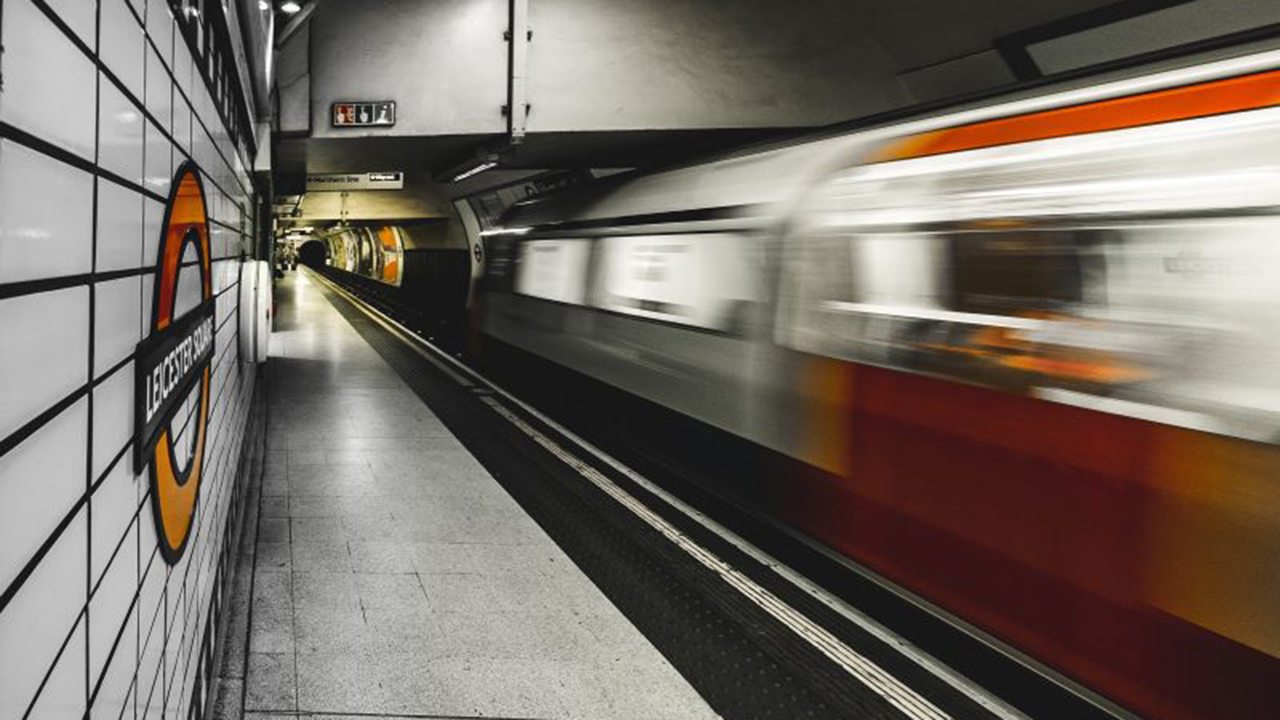
Passenger Rail: Improving Safety, Meeting Expectations
Written by Brendan O’Reilly, Group Chief Technology Officer, BAI Communications
One positive milestone has been rather consistent across the globe as different regions continue their pandemic recoveries: Ridership on passenger rail systems is rising.
We’ve seen evidence of this in the United Kingdom, Canada, Hong Kong, and the United States. For some passengers, it’s the first time in roughly two years that they’re commuting by public transportation, and they have new priorities now that they’re back.
When those who typically commuted were working from home, they gained extra hours in their day and comforts that didn’t exist on public transportation or in the office. Now that their commutes have returned, they have higher expectations for that experience than they did before the pandemic.
Data from BAI’s 2021 Connectivity Outlook Report shows that passengers are looking for a more connected experience on public transportation and are expecting more from their transit authorities. The report includes survey results from more than 2,500 public transportation passengers in New York, Sydney, Toronto, Hong Kong, and London and shows that riders are increasingly looking for safety and cleanliness, connectivity, and personalised experiences.
They’re so eager to see added benefits that, despite global privacy concerns, 83% of respondents say they are at least somewhat comfortable with their anonymised data being used to improve public transportation systems. This is especially true for a more personalized experience, which is how transit authorities can improve services to compete for riders against other data-enabled providers like Uber and Lyft.
Four in five (81%) public transportation users are at least somewhat comfortable with their data being used to predict travel patterns to provide them with a personalised transportation service, up six percentage points over 2020, and 91% are comfortable with having their data used to deliver tailored alerts of issues or delays along their normal routes.
Connectivity and technology are key to delivering what riders are seeking. There are already solutions available that can help deliver on some of these passenger needs, and when bundled together, they can transform service to outperform passenger expectations and prove to be a worthwhile investment that optimizes business operations.
Let’s look at some of the issues most important to passengers and how transit authorities can improve the rail experience and find efficiencies for themselves.
Safety and Cleanliness
For the first time in the history of the report, cleanliness outranks reliability and timeliness on the list of passenger priorities. Comfort, another consistent top priority, ranked 19 percentage points below safety on the list. The ongoing pandemic undoubtedly propelled this shift.
Transit authorities have certainly made progress in meeting customer expectations. More than 40% of respondents increased their use of public transportation because specific safety or public health technologies were in place, and we’ve seen transit authorities continue to make new investments.
They’re adding smart waste bins that compact trash and send an alert when they need to be emptied. They’re using existing technologies like CCTV to monitor for overcrowded trains as well as closed vents and windows that limit air circulation. More are implementing contactless technology to reduce the spread of germs and viruses and attract new business. This is particularly important as 52% of respondents said contactless payment options have inspired them to increase their use of public transportation.
All these adaptations can improve efficiency and meet passenger demands, but there’s still room to grow with safety and cleanliness.
More than half of respondents (51%) said they would use public transportation more if it were safer. Transit authorities looking to make this a priority have many options to implement new features. New sensor technologies such as LIDAR make real-time monitoring of crowds and safety possible without visually identifying individuals. Sound technology can detect when a maintenance check may be necessary based on the noises a train makes as it runs down the track. These investments don’t just pay off in customer satisfaction; there is great business value in ensuring that your entire stock is available and passes maintenance checks.
Connectivity
Riders are looking to bring the flexibility they enjoyed at home to their commutes and increased connectivity is what brings that to life. The pandemic has shown that being connected all the time has improved efficiency for businesses. It’s allowed employees to work in a way that suits them, and now they are expecting to do the same on public transportation.
They are going to be less forgiving of connectivity interruptions than before the pandemic because they’ve become accustomed to consistent, reliable home internet service. In fact, 91% of respondents say that all world-class cities should have seamless mobile coverage both above and below ground.
An overwhelming 95% of respondents believe they would benefit if public transportation networks used connectivity, data, and AI so passengers could have better services and enjoy the journey more.
If a passenger is on a three-hour train journey, they want to get the most out of that time, whether it’s watching streaming video or creating a presentation.
During lockdowns and work-from-home orders, personal time was put on the back burner because of interruptions at home and nowhere to go. Nearly half (46%) of public transportation users say they would benefit by enjoying some “me time,” free from the distraction of family and chores, while a similar number (45%) would be able to keep connected to their friends in a meaningful way.
While it may seem daunting to dramatically increase connectivity, there are solutions available for transit operators to improve the passenger experience, drive efficiencies, and even reduce costs. Overwhelming data shows why this is a sound investment.
A whopping 69% of respondents said they would take public transportation more if connections were improved and 49% if Wi-Fi were improved. The number of people who would consider switching mobile carriers for better service on public transportation networks has gone up by six percentage points each year since 2019, reaching 81% in 2021.
Most passengers (81%) are comfortable using public Wi-Fi or mobile networks on the train, subway, metro, or bus to do important work tasks, and almost two-thirds are comfortable making a business call on a train (65%) or bus (62%).
Transit authorities that develop their services to increase connectivity see benefits, too. They can use data points—both individual and aggregated anonymous passenger data—to improve service and inform their own assets, like Internet of Things (IoT) devices that can deliver personalised travel plans and delay alerts.
How Transit Authorities Can Take the Next Step
It can be overwhelming to consider implementing all these changes at once to realize efficiencies and meet passenger preferences. A more digestible way to consider it is to look at networks and technology like a sponge cake.
Wi-Fi and CCTV networks are like individual layers of sponge and the flavor that makes the cake so tasty comes from the ingenuity of how the ingredients are mixed. Once you lay the groundwork of connectivity and take stock of the technology you have (the sponge), you can begin to address specific challenges in creative ways (the flavor).
Visual data analytics, for example, can add a lot of flavor by informing operators when a platform is overcrowded or track the number of tickets going through a gate to predict the impact on trains moving forward. The challenge is finding new flavors as you implement technologies that improve service and create efficiency. Over time, a flavor may become a sponge because it’s now more of a pillar than an exciting new advantage.
The forward-thinking transit authorities are seeking the right combination of sponge and flavor to not just improve passenger satisfaction but become more efficient. Unlike other sectors that may be interested in reverting to pre-pandemic ways, rail operators are looking ahead at innovations that can deliver a cleaner, safer, more connected, and more enjoyable passenger experience.

Brendan O’Reilly, Group Chief Technology Officer, BAI Communications, has almost two decades of telecommunications expertise delivering complex technology strategies and programs to his role with BAI Communications. Based in London, Brendan’s role is focused on accelerating BAI’s expansion of its neutral host solutions and magnifying its strengths as a telecommunications infrastructure service provider. This remit forms a core part of BAI’s growth strategy, which aims to establish the business as a global leader in the delivery of shared 5G network infrastructure. Brendan joined BAI from Telefónica, where he was the Chief Technology Officer for O2’s U.K. operation for six years, with achievements such as leading the development of O2’s network share partnership with Vodafone, O2’s fastest 4G deployment in the U.K. and the recent launch of its 5G network. Specifically, he had accountability for O2’s strategy, design, planning, test, delivery and operation of the entire mobile and fixed network, messaging and Wi-Fi, supported by his team of more than 700 professional engineers. Delivering the best customer experience is at the heart of how Brendan works, knowing that his people are key to achieving this. Brendan is a strong advocate for his people and actively supports their development and self-learning.



